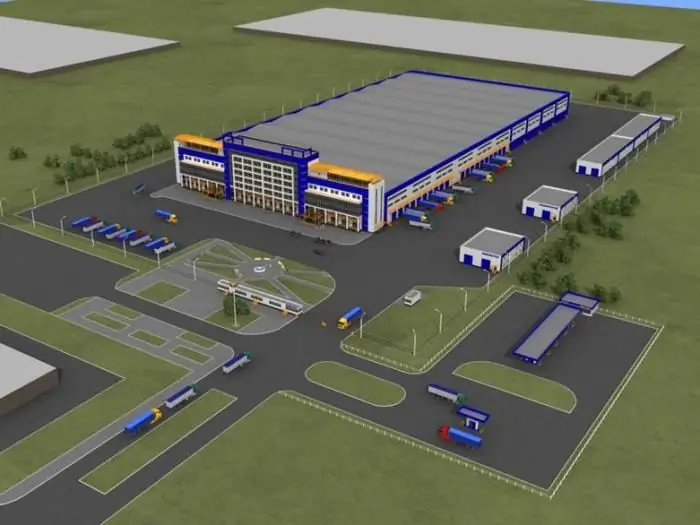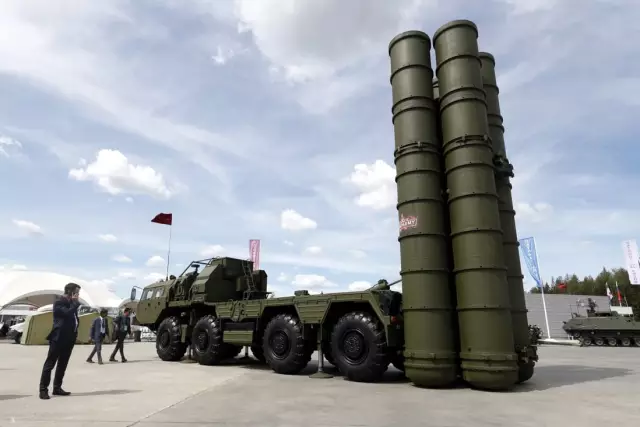2026 Author: Howard Calhoun | [email protected]. Last modified: 2025-01-24 13:10:45
The name of the outstanding Soviet aircraft designer Vladimir Mikhailovich Myasishchev became widely known in the mid-sixties of the last century. It was during this period that his aircraft were first shown to the public.
B. M. Myasishchev went through all the stages of becoming an aircraft designer. He started his career as a simple draftsman and ended it as a chief designer.
Myasishchev's planes (their photo can be seen in this article) were badly needed by the USSR.

It was caused by the advent of nuclear weapons. By dropping nuclear bombs on Japan, the United States informed the world about the beginning of a new atomic era, asserting its superiority. However, after the appearance of nuclear weapons in the USSR, the leadership of the country faced an important question about the possibility of delivering atomic bombs to the territory of a potential enemy. Myasishchev's aircraft, developed in the USSR, helped to cope with this problem.
First encounter with aviation
Myasishchev Vladimir Mikhailovich was born on September 28, 1902 in the town of Efremov, located in the Tula province. As a child, he was an ordinary child, showing no interest in technology. At the age of 11, Vladimir entered the localreal school, where he studied the program with a mathematical bias.
During the Civil War, a detachment of military pilots on their way to the Southern Front stopped in Efremov. Vladimir, who had seen aircraft only in magazine pictures before, was able to see the "steel birds" with his own eyes and even had the opportunity to touch them. Later, Myasishchev described this event in his memoirs. He pointed out that the meeting with the planes made such an indelible impression on him that it predetermined his entire future fate.
Student years
In 1920, Vladimir Myasishchev arrived in Moscow, having entered the mechanical faculty of the Moscow Higher Technical School. He combined his studies with the work of a draftsman at the Scientific Experimental Airfield of the Air Force. Here he first tried himself as a designer. The experience in aircraft design gained at this place of work was useful to Vladimir in his future professional activities.

Myasishchev's graduation project de alt with the topic of all-metal fighters. This was something that he did not do at all in his design activities. In those years, the USSR had only one all-metal aircraft ANT-3, which was the brainchild of A. N. Tupolev. This confirms the novelty and complexity of the topic chosen by Myasishchev. However, despite this, Vladimir Mikhailovich successfully defended his diploma.
Start in employment
After graduation, Myasishchev became an employee of the Central Aerohydrodynamic Institute. His immediate supervisor at TsAGIwas Vladimir Petlyakov, who headed the department of the wing. Here Vladimir Mikhailovich took an active part in many works. He designed wings for bombers of the TB 1 and TB 3 models, and also designed bomb bays for these aircraft. And already during this period, Myasishchev was able to prove himself as a very talented designer, combining the duties assigned to him with scientific research.
New offer
A. N. Tupolev became interested in the work of the young designer. The well-known aircraft designer offered the industrious and talented Myasishchev the leadership of the experimental aircraft department. Being in this position, Vladimir Mikhailovich received the task of designing a torpedo bomber. It was Myasishchev's first aircraft. The torpedo bomber, which had some original design solutions, was successfully tested. However, during one of the flights, the plane crashed. This ended the existence of this torpedo bomber.
Borrowing experience
In the 30s of the 20th century, Soviet designers could not offer reliable aircraft to the country. Then the government of the USSR decided to buy an advanced passenger aircraft DC 3 in America. Its design could be used in two directions - passenger and transport. V. M. Myasishchev was a member of the commission that received the aircraft, and then he was instructed to study the drawings of the aircraft and convert inch measures to metric ones. However, this case was never completed.
Years of imprisonment
In 1938, Myasishchev was arrested and placed in a closed design bureau,being a prison. The official name of this place is TsKB 29 NKVD. In this bureau, arrested aircraft designers worked on the creation of aircraft. Myasishchev worked here under the direct supervision of Petlyakov. They were given the task of designing a fighter.

In these difficult prison conditions, Myasishchev's second aircraft was created - a high- altitude long-range bomber. This project was noticed by the government, which allowed Vladimir Mikhailovich to head his own design bureau. And already in 1938, a new working project saw the light. It was Myasishchev's plane - a long-range high- altitude bomber DVB-102. New in this aircraft were several directions:
- pressurized cockpit, which housed 4 pilots;
- large six-meter bomb bay;
- guns that could be controlled remotely.
In 1940, Myasishchev was transferred from the Central Design Bureau 29 of the NKVD to Omsk, without the right to leave. In this city, the aircraft designer continued the design of the DBV-102. The first machine of this model was built already in 1941, showing good speed and altitude during testing. Only the range of the bomber turned out to be less than expected, which is why its mass production was not carried out. However, the government noted the work of the designer by presenting him with a state award.
After V. M. Petlyakov died in a plane crash, Myasishchev continued his work on the creation of a dive bomber. During the war in Kazanthe factory where the designer worked with part of the design bureau he created, about ten modifications of this aircraft were produced.
Post-war years
Despite the fact that for his fruitful work Myasishchev was awarded the Order of Suvorov and had the rank of major general, his design bureau was disbanded in 1946. Vladimir Mikhailovich began to work as a dean, heading the aircraft building department of the Moscow Aviation Institute. Here he taught the course "Design and design of aircraft" for students.
Myasishchev dedicated his years of work at MAI to the training of young engineers. Here he continued to design aircraft. His plans included the design of a long-range jet strategic bomber. He attracted students to his work, offering them the necessary topics for term papers, as well as theses. The resulting project was approved by the Ministry of Aviation Industry. Myasishchev was offered to become the head of his own design bureau again.
Creation of strategic bombers
The new Myasishchev design bureau began its existence in 1951. Vladimir Mikhailovich immediately regained all the designers with whom he had worked in previous years. Aviation Plant No. 22 was placed under the control of the Design Bureau. The workshops of this production were located in Fili.
Aircraft of the Myasishchev Design Bureau were developed using fundamentally new ideas. They concerned aerodynamics and the layout of aircraft. So, these aircraft provided for "bicycle" chassis. They consisted of two main struts on the fuselage and two small struts at the ends of the wings. Lessthan for the year of the existence of the design bureau, about 55,000 drawings were sent to the plant.
Strategic bomber test
It is worth saying that the designation that all Myasishchev's aircraft created after the war received was "M". And the first of them was made in 1952. In October, he passed his first ground tests at the airfield. Zhukovsky. The only big drawback of the aircraft, which was created in record time (only 22 months), was significant fuel consumption. However, the point here was in its engine, which was designed by A. A. Mikulin Design Bureau.
The first strategic jet bomber in the USSR took off for the first time in the sky on 1953-20-01, easily breaking away from the runway. These aircraft of the Myasishchev Design Bureau were named M 4. The pilots who flew them noted the ease of piloting, and the aircraft technicians noted the ease of operation.
Improve the model
Despite the good reviews, V. M. Myasishchev did not stop there. He continued to improve the M 4. In just two months, the engineers of his design bureau developed and transferred to the plant more than seven thousand drawings, which made it possible to assemble a new modification of the bomber. It was the Myasishchev M 3 aircraft. Tests of the new bomber took place in the spring of 1956 at the airfield in Zhukovsky. But already in the air there was a problem with control, and one of the engines failed. However, test pilot M. L. Halley managed to land Myasishchev's M 3 plane on the runway. On the ground, all problems were quickly found and fixed.
After that, Myasishchev's M3 aircraft (see photo below) was transferred tomass production. This aircraft had improved aerodynamics and was the main bomber in the USSR.

Aircraft M 4 have undergone changes in design and began to serve as air tankers for all long-range aviation transport.
Simultaneously with the work on the modification and improvement of already created bombers, projects were developed relating to the development of strategic aviation. It was Myasishchev's model 31, as well as 32 and 34.
Modifications 31 and 31 were bombers with transonic flight speeds. Model 32 was supersonic. The M 34 aircraft had the highest flight characteristics. Its maximum possible flight speed is 1350 kilometers per hour.
All the research carried out on these projects became the basis for the outstanding work of the Myasishchev Design Bureau in the development of the Buran-40 supersonic missile.
Passenger transport
Simultaneously with the creation of military bombers, KB V. M. Myasishchev was engaged in the development of peaceful aircraft. Unfortunately, the passenger aircraft projects of this design bureau never received their further development.
Aircraft M 50
Further, the government of the USSR entrusted Vladimir Mikhailovich with a new job. It was the M 50 Myasishchev aircraft, which became a supersonic strategic bomber. Before this period, nothing like this was even designed in world aviation.

The M 50 aircraft had a largedegree of automation of control, which made it possible to reduce the number of crew to two people. And in all other respects, the bomber turned out to be very successful. Its only weak point was the engine. In those days in the USSR, this important part of aircraft did not have sufficient power, reliability and long service life. In addition, all engines produced in the country consumed too much fuel. The aircraft designer Myasishchev could not find a suitable unit, and his M 50 aircraft could not reach supersonic speed. This was the main reason why the advanced project of Vladimir Mikhailovich was closed. The M 50 aircraft was used for experimental purposes. All sorts of innovations were tested on it. The last time the M 50 took off was at a military parade in Tushino. Immediately after this flight, he was transferred to the museum of the city of Monino.
Another outstanding project of the Myasishchev Design Bureau was the M 52 supersonic bomber. However, as in the previous case, this aircraft did not have the engine required for its performance. This bomber never took off.
Pilot Plant Management
In 1967, Vladimir Mikhailovich was waiting for a new appointment. He was approved for the position of head of the experimental machine-building plant, whose production facilities were located in the city of Zhukovsky. A small design bureau worked here, for which Myasishchev reassembled the design team. Only after that, Vladimir Mikhailovich took up the development of a strategic supersonic multi-modebomber. In parallel with his design bureau, a similar task was carried out by the teams of P. O. Sukhoi and A. N. Tupolev.

Myasishchev proposed a radically new wing scheme with variable sweep. Previously, a similar design solution was available in the aircraft of P. O. Sukhov and in American models. However, all previous versions had a very short deflected part of the wing. The project of V. M. Myasishchev surpassed all the others. This design solution was used by A. N. Tupolev. After all, what Myasishchev designed turned out to be very successful. As a result, the Tu-160 aircraft was almost completely designed on the basis of Vladimir Mikhailovich's aircraft.
BEMZ, under the leadership of Myasishchev, designed and then built an aircraft to destroy balloons in the stratosphere. It was an M 17 aircraft, capable of reaching speeds of up to seven hundred kilometers per hour, rising to a height of up to twenty-two thousand meters.
An invaluable contribution to the development of aviation
Vladimir Mikhailovich Myasishchev went to the intended goal only by unbeaten paths. A man with indefatigable engineering courage and the gift of technical foresight, had remarkable organizational skills, captivating the entire design bureau team with his unusual decisions.
The answer to the question of how to measure the contribution of this designer to the history of aviation can be obtained after watching the film "Myasishchev, a few planes and all life" (2010).
Each of Vladimir Mikhailovich's works was a real breakthrough into the future. And despite thatthat out of a large number of projects, only a few were completed, each Myasishchev aircraft entered the history of our aviation.

Vladimir Mikhailovich died on 1978-14-10, almost a month after his seventy-sixth birthday. More than half a century Myasishchev gave aviation. Over the years, he has raised many worthy students. Most of them continue to work in aviation today.
The creative path of Vladimir Mikhailovich is a vivid example for novice designers, and his approach to leadership can serve as a model for those who today head research and development organizations.
Recommended:
Evaluation of investment projects. Risk assessment of an investment project. Criteria for evaluating investment projects

An investor, before deciding to invest in business development, as a rule, first studies the project for prospects. Based on what criteria?
Investment projects - what is it? Purpose and effectiveness of investment projects

Today, the very term "investment" is very popular among the broad masses of the population. If earlier only we althy and large capitalists were engaged in this, now everything has changed dramatically. Investment projects - what is it? How to implement them to obtain a constant and stable income?
Anti-aircraft missile system. Anti-aircraft missile system "Igla". Anti-aircraft missile system "Osa"

The need to create specialized anti-aircraft missile systems was ripe during the Second World War, but scientists and gunsmiths from different countries began to approach the issue in detail only in the 50s. The fact is that until then there simply were no means of controlling interceptor missiles
Where is the keel of the plane? Aircraft keel: design

Even a person who has never seen the sea probably knows the parting word: "Seven feet under the keel." And there are no questions here. The keel of a ship is the most important structural part on which many parts of its hull are attached. But does anyone know where the keel of the aircraft is located and what it is for?
How does the plane slow down when landing? Types of aircraft and methods of braking

The field of aircraft engineering is of interest to many people, especially those who often fly airplanes. Knowledge of the structure of aircraft will not only make you more erudite, but also relieve many fears, for example, the fear of flying. This article will talk about how the plane slows down during landing and about the methods of braking on different aircraft

